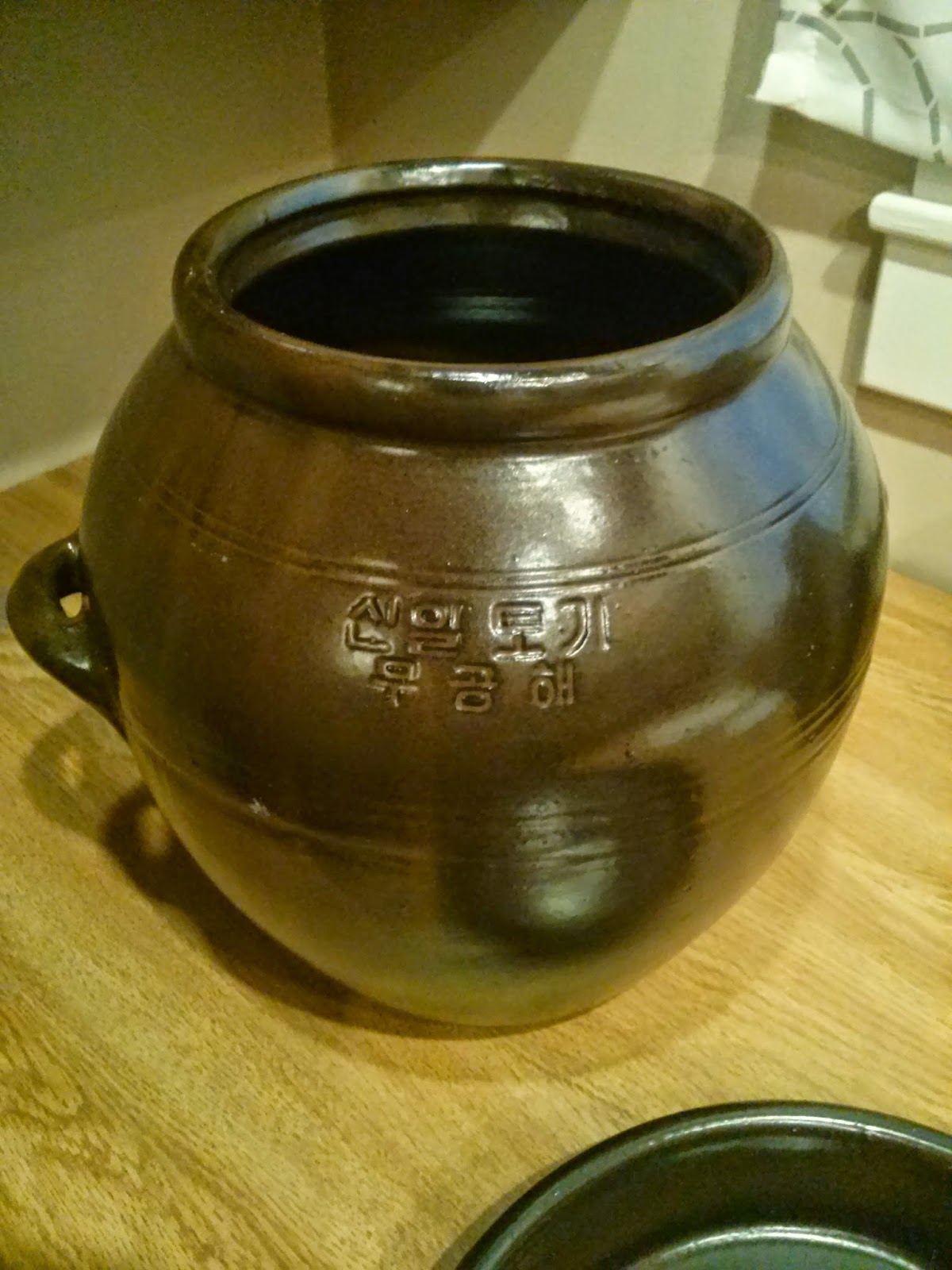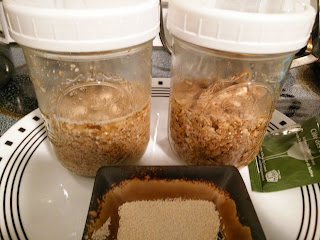New Hangari
Great news! I got a new hangari!
I used a small hangari several times when brewing makgeolli in Korea. However, I've learned a lot since then and want to continue experimenting brewing using hangari. Hangari may also be called onggi.
Below I'll give a quick summary of the pros and cons of using a hangari, as well as a few methods used to prepare hangari for brewing. This content was originally found in Jeontongju that You Can Easily Make at Home by Lee SeokJun (전통주 집에서 쉽게 만들기, 이석준 ). It has been translated from the original text by me, with some help from my lovely wife.
What's a hangari? (항아리)
Hangari is the clay jar traditionally used to ferment all kinds of foods or beverages in Korean cuisine. These are the big brown jugs that house kimchi, rice wine, and medicinal extracts. They come in various shapes and sizes, but they are usually made with clay and have a characteristic brown glaze. They are heavy, cumbersome objects, but they represent a traditional way of brewing makgeolli that I must explore.I used a small hangari several times when brewing makgeolli in Korea. However, I've learned a lot since then and want to continue experimenting brewing using hangari. Hangari may also be called onggi.
Below I'll give a quick summary of the pros and cons of using a hangari, as well as a few methods used to prepare hangari for brewing. This content was originally found in Jeontongju that You Can Easily Make at Home by Lee SeokJun (전통주 집에서 쉽게 만들기, 이석준 ). It has been translated from the original text by me, with some help from my lovely wife.
 |
| Pictured: the new hangari |
Hangari Pros and Cons (항아리 장단점)
Pros:
- Traditionally, hangari were used by Korean ancestors
- Ventilation creates an environment suited for the appropriate propagation of microorganisms
- Hangari have warm properties and are not sensitive to temperature changes
Cons:
- It is hard to sanitize the inside of a hangari
- It is hard to make large quantities of makgeolli, and hangari cannot be used in large scale facilities
- Hangari are heavy and fragile
-전통주 p. 36, 이석준
Preparing Hangari for Brewing
Before brewing, hangari must be cleaned and sanitized, just like any other fermentation vessel. It is important to get rid of any harmful microorganisms before introducing the nuruk and yeast to their new home. Below are several methods that can be used to sanitize hangari. Keep in mind that hangari are sturdy pieces, but they are very brittle due to the nature of clay pottery and are considered fragile.
- Straw fire - A fire is lit at the mouth of the hangari, and the heat and smoke are allowed to propagate inside the vessel.
- Distilled spirits (50~60%) - High proof alcohol is sprayed inside the hangari and allowed to dry. This method may be repeated several times before use.
- Steam - The mouth of the hangari is placed above the steam vent of a boiler.
- Gas fire - The mouth of the hangari is placed above a gas range and the burner is lit. The heat is intended to propagate throughout the vessel and sterilize it.
- Boiling - The hangari is placed in a large, lidded pot with a small amount of water and slowly brought to a boil.
- Sanitizing agent* - A sanitizing agent, such as StarSan which is commonly used for brewing applications, can be used in place of the methods above.
*My suggestion
I hoped this post piqued your curiosity about hangari. More to come in the future...





Comments
Post a Comment